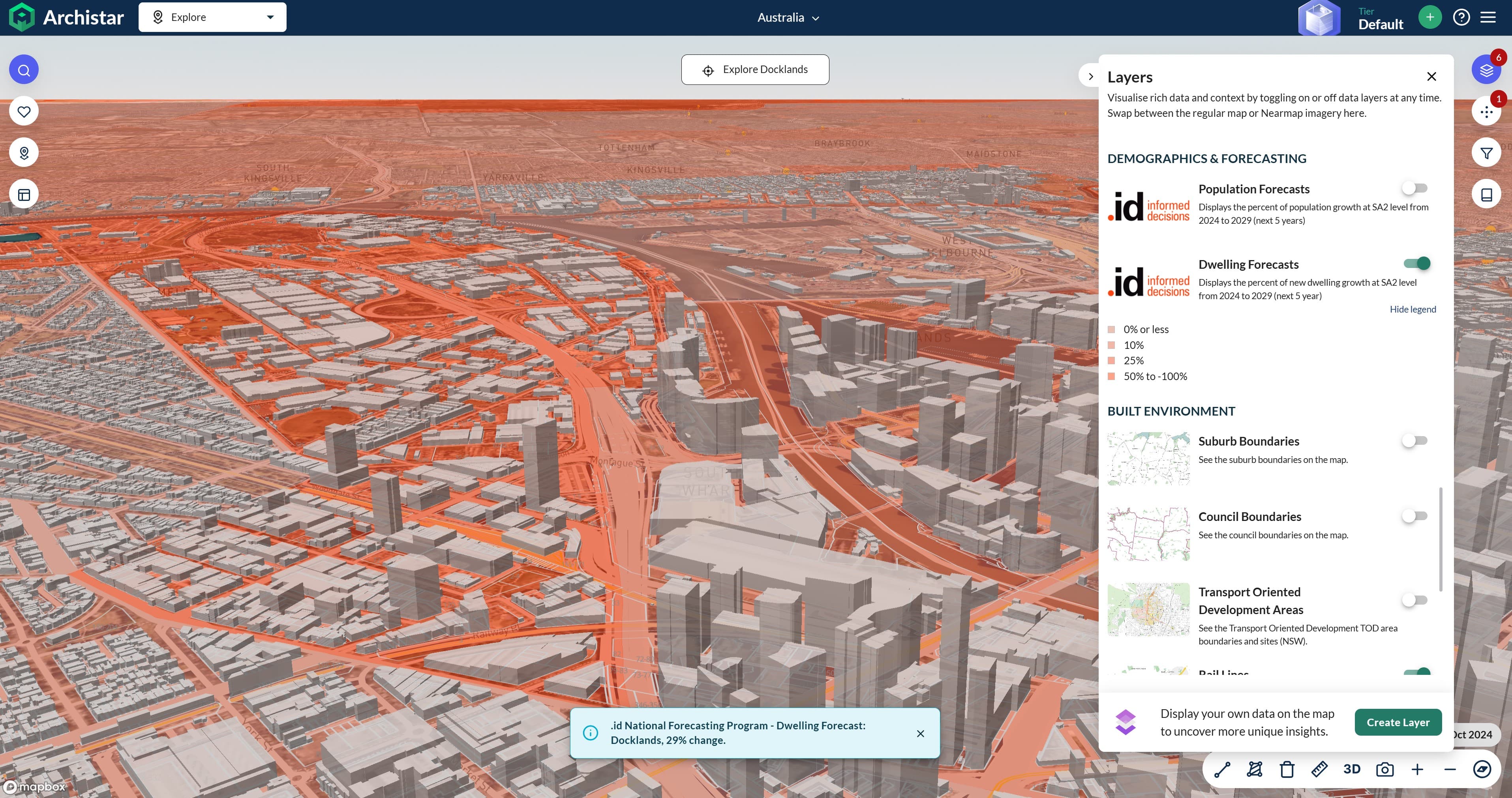BLOG
The flowing tides of population forecasting
The flowing tides of population forecasting
There are so many considerations when forecasting populations. At .id, our population forecasts are fundamentally based on a number of principles and assumptions which include understanding the long-term trends of interstate and overseas migration, housing development, transport infrastructure, regional development, suburb lifecycle, and much more…
In this blog, we take an in-depth look into the population of Porirua City, uncovering the history of the territorial authority in terms of demographics, future population change, its place in the Wellington region and the role and function elements which define Porirua City and its small areas.
Porirua over the years
You may be wondering about the semi-poetic title of this blog…Porirua’s name is likely derived from ‘Pari-rua’, meaning ‘the flowing of the two tides’, referring to the two tidal estuary arms of Porirua Harbour (Onepoto Arm and Pāuatahanui Inlet). In Māori tradition, the Porirua Harbour is home to the taniwha “Te Awarua o Porirua”. Porirua is largely formed around the arms of the Porirua Harbour and the coastline facing out to Cook Strait and the north-eastern parts of the South Island. The earliest known inhabitants of Porirua were Māori who made their camps in virtually untouched forests. By studying remnants of their camps, archaeologists believe these early inhabitants were living in Porirua at least as far back as 1450AD.
Captain Cook visited the Porirua harbour when he was mapping New Zealand’s coastline in 1769, but it was not until the late 1820s that Europeans began to settle in Porirua. In the post-World War II era, a shortage of housing in Wellington led to a need for increased housing development. The satellite community of Porirua, 20 km from New Zealand’s capital, Wellington was a collection of planned suburban development to meet this demand. Between the 1940s and 1970s it was planned and developed for 70,000 people. In the late 1950s and 1960s it would transform from a village to city. By 1977, 78% of Porirua was State housing and it was the country’s largest single concentration of public dwellings (this dwindled to 41% in 2012). The population has increased from 5,000 people in 1950 to 21,000 in 1966 and 53,700 as at the last Census in 2013. During the 1960s Kodak, UEB Industries and many small businesses opened at Elsdon. During the following decade, Ashley Wallpapers developed the former UEB property and Todd Motors (later Mitsubishi) moved from Petone to Porirua.
Migration patterns and population change in Porirua City
In the last few decades, Porirua City has gained new residents from many different places within the region, from further away in New Zealand and overseas. Most new residents from within New Zealand came from Wellington City, Hutt City, and further away places such as Christchurch City. Porirua City lost residents to different places in the country, mostly to the neighbouring Kapiti Coast District followed by losses to the largest city in New Zealand, Auckland. Usually, internal migration (within a Territorial Authority, region or country) is strongly influenced by age, that is people moving to and from different places based on their life stage. It is most likely that those residents who left Porirua to live in Kapiti Coast are either young families, established families or lifestyle living empty nesters whereas those residents who departed Porirua City for Auckland City are more likely to be younger adults in search of education and employment opportunities in the large metropolitan centre.
Porirua City’s population is forecast to grow from 53,700 in 2013 to 64,843 in 2043. The areas forecast to experience most significant growth in the 30 year forecast period are Pukerua Bay-Plimmerton, Paekakariki Hill-Pauatahanui, Paremata-Papakowhai and Whitby East – all related to major greenfield residential development, including the assumed development of the Northern Growth Area.

Porirua City’s Population change over time, from 1996-2043. The blue bars refer to population forecast results whereas the grey bars are historic population data.
Population growth and population change
Porirua City is well connected with its neighbours, namely the larger Wellington City and Hutt City. Daily migration flows in terms of travel to work from Porirua City to Wellington City result in over 15,000 people travelling to Wellington City for work (and just under 2,800 Wellington City residents working in Porirua City). Porirua City has a net gain of residents from Hutt City and from Wellington City – i.e. more people moving to Porirua from Wellington and Hutt cities than are departing. Since the mid-2000s, Porirua City has offered housing options in greenfield growth areas such as Aotea Block, so many residents moving to Porirua from Hutt City and Wellington City did so due to the available new housing opportunities. In the future, the regional connectivity and overall attractiveness of living in Porirua City (if working in Wellington) are expected to increase with the development of the Transmission Gully State Highway.
The age structure of Porirua City residents is expected to be more skewed towards older age groups in the future, as is the case in many cities and regions in New Zealand and Australia. However, due to Porirua City’s availability of land for future residential development, the age structure of the City will also continue to experience growth in the young and established families ranges, i.e. 25-39 year olds with children aged 0-14 years. If all of Porirua City’s development opportunities were assumed to be exhausted early in the forecast period for example, then the profile of the age structure would be more pronounced in the older age groups, with little growth in younger groups. One area which demonstrates the future maturity of a suburb and the ‘ageing in place’ phenomena is Whitby East. This is an area that developed during the 1990s and 2000s and is still expected to see 705 newly built dwellings from known major greenfield development by 2025.

Residential development assumptions for Whitby East. Most development slows down after 2024 and ageing in place is visible in the age structure forecast results.
After this, the area is assumed to reach full development capacity and begin to mature, as the opportunity for new greenfield housing development is exhausted and residents who have moved to the area as young families begin to age in place, with their children growing up and leaving home. By 2043 the suburb looks quite different from a demographic perspective – fewer families, more empty-nesters, retiree households without children, and older lone person households. The share of Whitby East’s population aged over 65 years in 2013 was 10.8%. By 2043, due to ageing in place, 23% of Whitby East’s population is expected to be aged over 65 years. This kind of demographic change also results in smaller households, with the average household sizes decreasing over time.
The changing age structure of Whitby East’s population
Housing supply and future residential development
In terms of housing supply, Porirua had relatively high amounts of greenfield residential development since the early 2000s, mainly in the new suburb of Aotea where the Aotea Block development has been steadily expanding. In the years from 2004-2013, over 700 houses were built here, with a further 698 forecast to develop by 2024 as part of a staged development. All of these development assumptions are clearly listed in forecast.id and allow users of the forecasting resource to understand the driving forces behind growth, housing supply timing and rates of development in an area. Aotea Block development changed both the physical landscape and migration patterns of Porirua City since the early 2000s, contributed to over 40% of all new dwelling constructions since it began developing and was the main driver in terms of population growth for the City in the 2000s and will continue to be so until completion in the early 2020s.
Following the completion of Aotea Block, another part of Porirua City is anticipated to take on the major housing supply role once the Aotea Block supply is exhausted. The Northern Growth Area, predominantly spread over the small areas of Pukerua Bay-Plimmerton and Paekakariki Hill-Pauatahanui is forecasted to add 1,088 new dwellings to the City by 2043, with remaining capacity past that. Other strategic developments in the same region, such as the Camborne North Residential Area and the Pauatahanui–Judgeford Development Area will also contribute similar housing stock as part of greenfield residential development with some variation and provision of larger lifestyle blocks for rural living options in certain areas.
Dwellings and development map from Porirua City’s forecast.id resource, outlining the large residential development expected in the City’s north.
Improved connectivity with the Wellington Region
Much of the residential development in the northern suburbs of Porirua City is somewhat dependent on the completion of the Transmission Gully Motorway, a part of nationally significant transport infrastructure aimed at decreasing journey to work congestion and easing the heavier vehicle transport of freight and goods from the Wellington region to northern parts of the country as well as towards Wellington and the gateway to the South Island. Currently, the Transmission Gully Motorway construction is in progress and is anticipated to complete by 2020. It is based on these timelines that Porirua City’s Northern Growth area and the more rural lifestyle-oriented Pautahanui-Judgeford development are timed to commence development. It is anticipated that the addition of the Transmission Gully Motorway will make those northern parts of Porirua City more accessible and reduce drive times to the large hub of employment, Wellington City, making living in Porirua City more desirable for those looking to purchase housing in the region.
Council uses of forecast.id
With the population forecasts available online, the staff at Porirua City Council have immediately started using the resource for consultation work and discussions with the Ministry of Education regarding the expected changes and growth in the Northern Growth Area and anticipated demand for education services. They are also familiarising themselves with forecast.id and other .id demographic resources to be able to utilise them when working on the upcoming Long Term Plan 2018-2028. In New Zealand, the Long Term Plan is a document required under the Local Government Act 2002 that sets out a local authority’s priorities in the medium to long term. As always, .id offers training and assistance as well as access to our forecast and population experts to help anyone at Porirua City Council with questions or requirings more information about a specific topic.
.id is a team of population experts who combine online tools and consulting services to help local governments and organisations decide where and when to locate their facilities and services, to meet the needs of changing populations. Access our free demographic resources.
Nenad Petrović
Nenad’s background is in geosciences and geographic information systems. At .id, Nenad has experience as both as a demographer and population forecaster. His areas of expertise are place-based analysis, identifying spatial patterns in demographic trends, community profiling, catchment analysis and an understanding of role and function of different communities.









